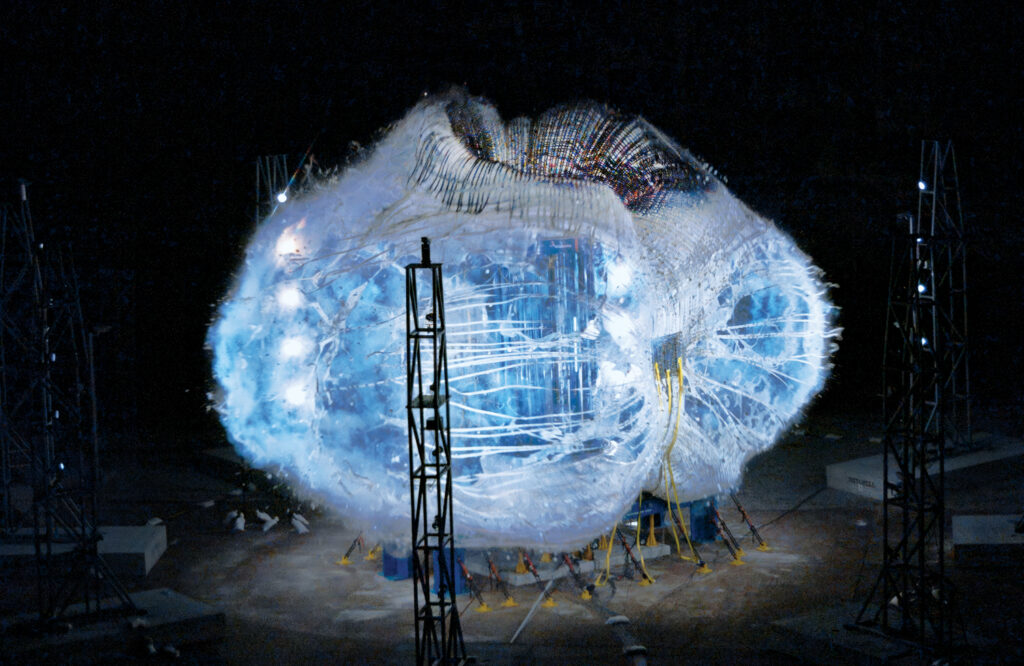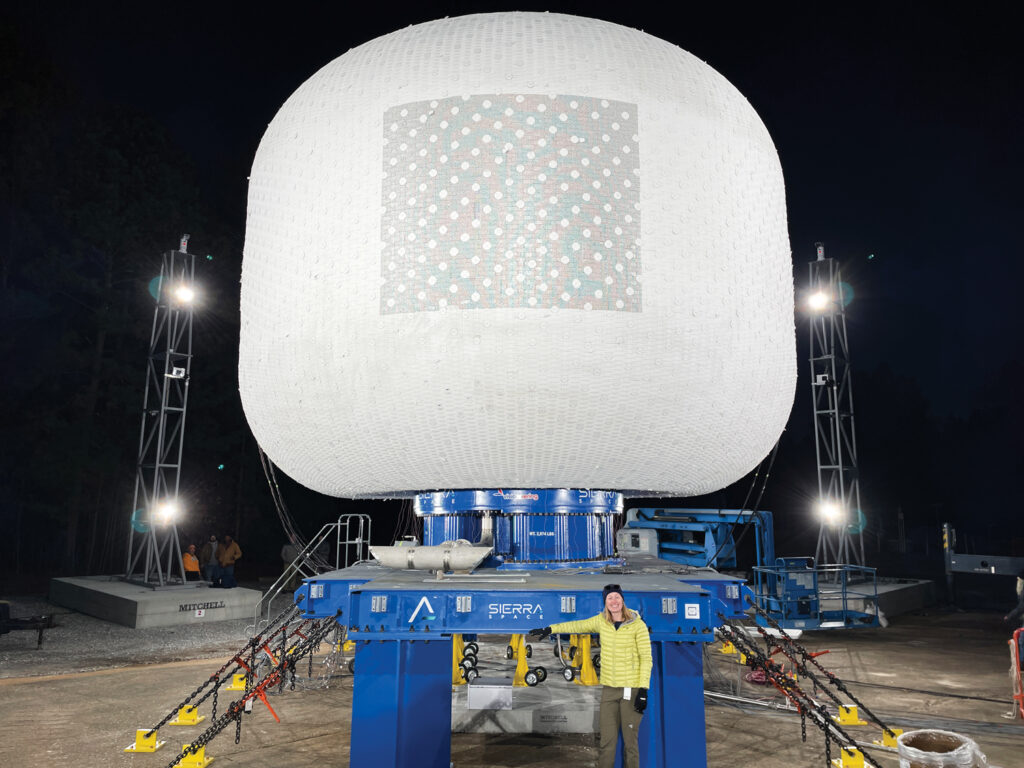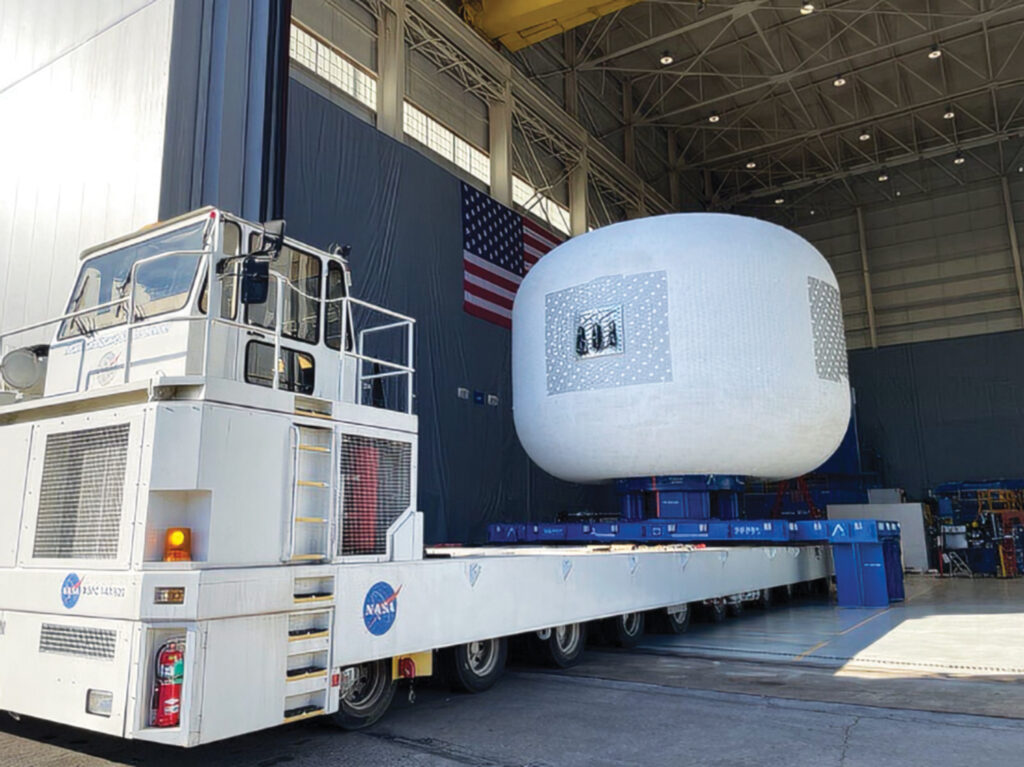
Another milestone in the eventual replacement of the International Space Station (ISS) went off with a bang as Orbital Reef’s full-scale inflatable habitat exceeded its required specifications during an ultimate burst pressure test in December, rescheduled from October.
The test of the Large Integrated Flexible Environment (LIFE™) habitat’s pressure shell exceeded NASA’s specifications of 60.8 pounds per square inch by 27%, not failing until it reached 77 psi. (The 60.8 figure is its maximum operating pressure of 15.2 psi multiplied by a safety factor of four.)

“The successful full-scale burst test is an undeniable leap toward a new reality of how humans live and operate in space, and we are proud to celebrate this milestone as we work to expand humanity’s capabilities in low Earth orbit,”
says Rob Reed, president of Space & Engineered Solutions at ILC Dover LP.
Orbital Reef is a joint project of Sierra Space Corp., Blue Origin, ILC Dover and others, aiming to be the first commercial habitat in low Earth orbit before the end of the decade. The inflatable habitats will have three floors and multiple layers protecting the inner area where the astronauts will work and live. Fabrics used in its construction include Vectran® straps, spun from a liquid crystal polymer that gets stronger as it gets colder. The habitats will be delivered to space folded inside a 5-meter rocket fairing, becoming rigid upon inflation.

The test was performed with support from NASA’s Reimbursable Space Act Agreement, in which the Marshall Space Flight Center provides services to Sierra Space in support of its work developing commercial low Earth orbit technology.
Ultimate burst pressure testing in 2024 is planned for both small-scale and full-size versions of the Atmospheric Barrier and the Micrometeoroid Orbital Debris layers. The habitat’s previous burst pressure test in August 2023 was on a one-third scale model that included blanking plates representing where windows could be placed. This test had two blanking plates where a window or hatch could be installed.
 TEXTILES.ORG
TEXTILES.ORG


